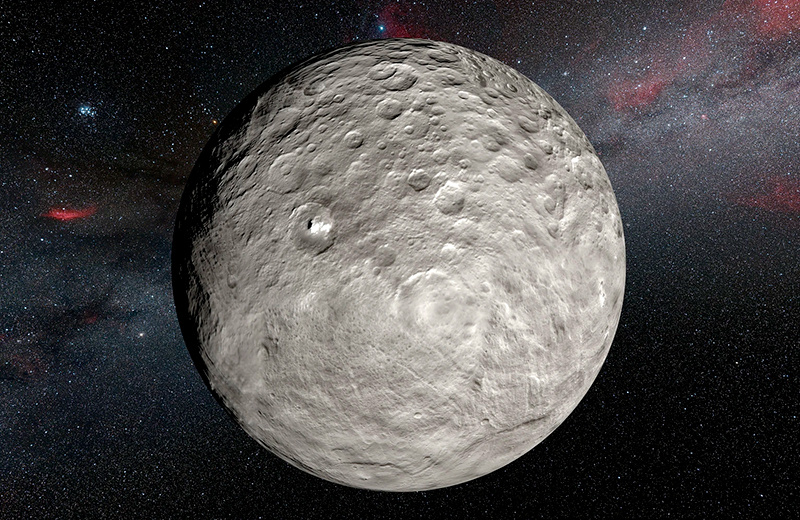Between the orbits of Mars and Jupiter lies an object that many people tend to forget exists. But, this approach is wrong, because we are dealing with a truly spectacular dwarf planet.
Ceres is a forgotten dwarf planet
This object has been known to us for over two centuries, it was discovered in 1801 by astronomer Giuseppe Piazzi. For a while, it was even considered a full-fledged planet. However, over time, more objects were discovered in a similar orbit, and the whole group was called asteroids.
Today it is assumed that between Mars and Jupiter lies the Asteroid Belt. Few people know, however, that for almost two decades now, one object has been singled out in this Belt that is not an asteroid, but a dwarf planet like Pluto. That dwarf planet is Ceres.
Ceres was originally thought to be a round, rocky object similar to other asteroids. However, recent research shows that it is a completely icy body.
In their latest research paper, published in the journal Nature Astronomy, researchers from Purdue University and the Jet Propulsion Laboratory indicate that this grey spherical object was once covered by a dirty - murky ocean that has now turned into a thick ice crust.
Such conclusions were reached by computer modelling of deformations of craters dotting the surface of Ceres. Researchers in their work argue that currently on the surface of Ceres quite a lot of water ice. And the amount of water gradually decreases with depth.
Previously, scientists had rejected the possibility of water ice on the surface, mainly because of how little the craters there have deformed over billions of years. However, computer modelling by scientists shows that all it takes is mixing a little bit of rock material with water ice and the craters will be much stronger and less likely to deform than normal ice craters.
This is a fundamental change, since just a few years ago it was assumed that ice made up about 30 per cent. of Ceres' volume. According to the authors of the new study, this value is as high as 90 per cent.
Thus, it appears that Ceres could have been a water world at an early stage of the solar system's evolution. However, unlike Europa, Ceres' ocean had more rocks. As a result, the two landmasses evolved in slightly different scenarios.

Scientists, having analyzed data from the Dawn probe, which once orbited Ceres and did not find shallow craters on its surface resembling those that astronomers find on Europa, concluded that there is not much ice in the crust of Ceres. Computer modelling shows that it's not that simple.
Enough of the ice has more rock impurities, and the craters that form in the freezing crust will be much stronger than the ice craters. It turns out that a world of frozen water exists relatively close to Earth. Detailed studies of Ceres could give us a valuable starting point for studying water worlds orbiting stars other than the Sun.
Moreover, comparing Ceres to objects such as Europa and Enceladus will show how small changes in ocean composition can affect its long-term evolution. All of the above points to the fact that Ceres deserves another space probe that can look at it from a whole new angle.
The Dawn spacecraft, which orbited Ceres from 2015 to 2018, was a great starting point for exploring this world. Now that we have new concrete information, the next probe can be adapted to find answers to new questions about the watery worlds of the universe.
It is worth emphasizing here that there are several bright spots on the surface of Ceres, which are most likely traces of water flows from a former ocean. All we need to do is land on them and collect samples to bring back to Earth samples from the first water world to come within reach of our space probes.


















